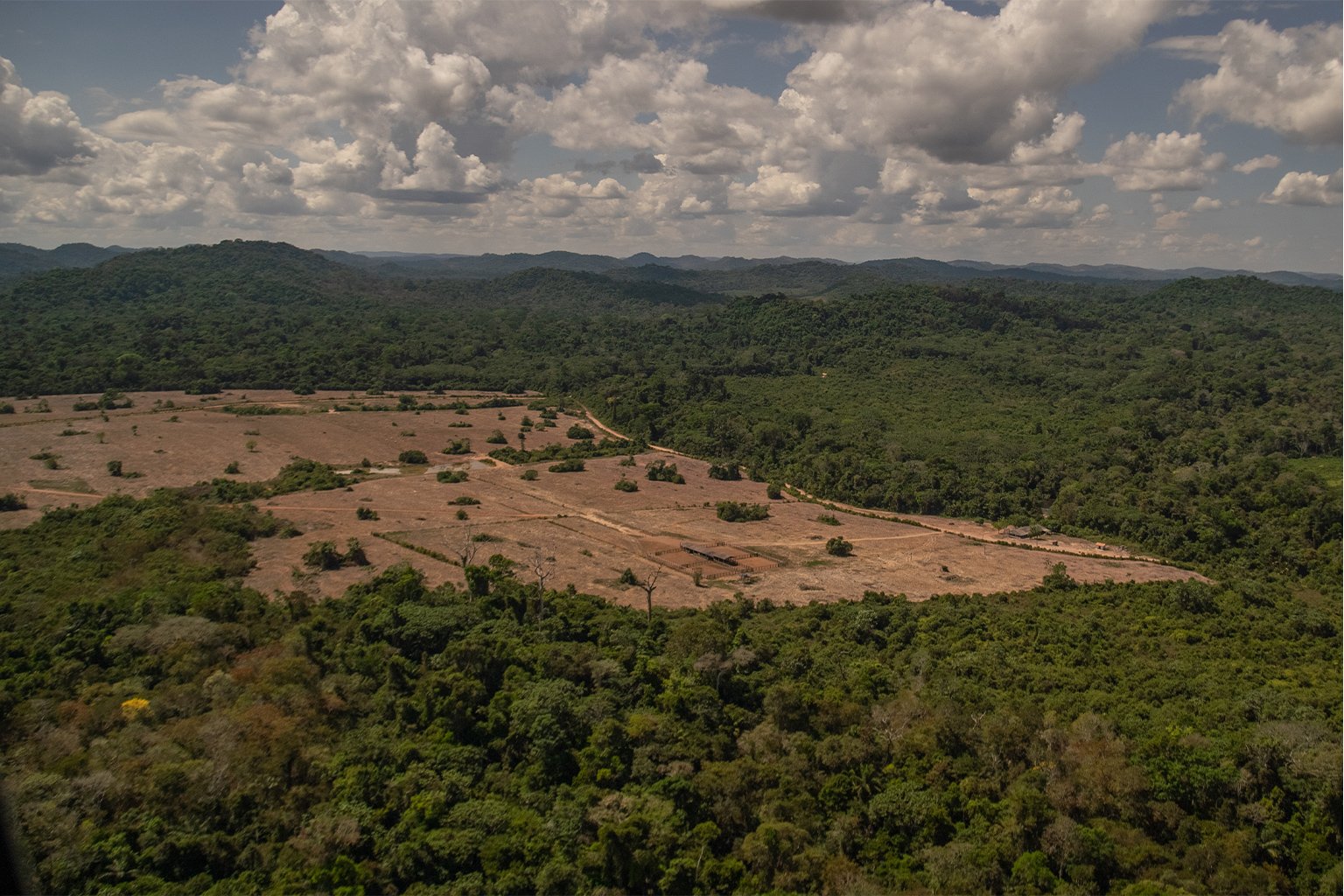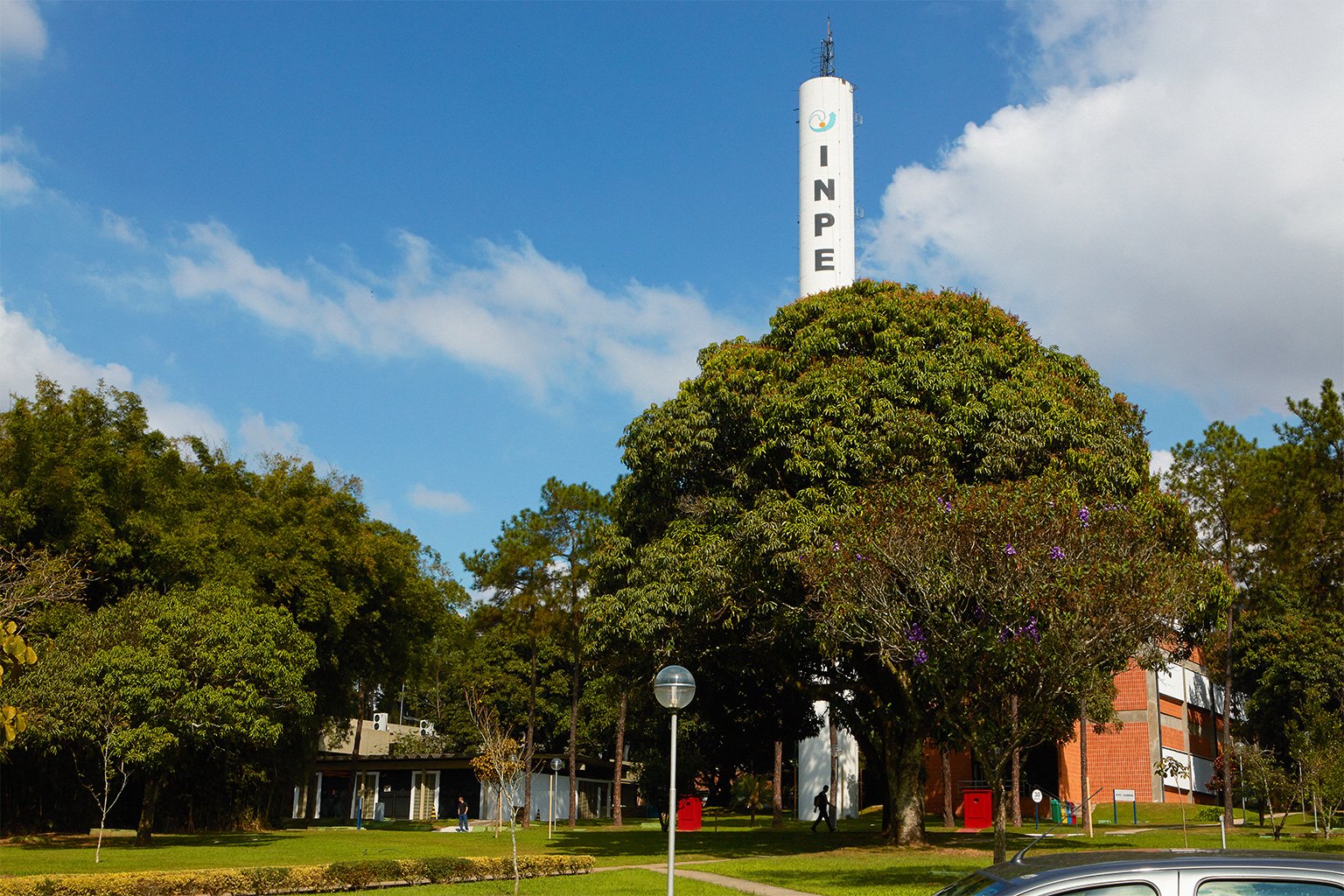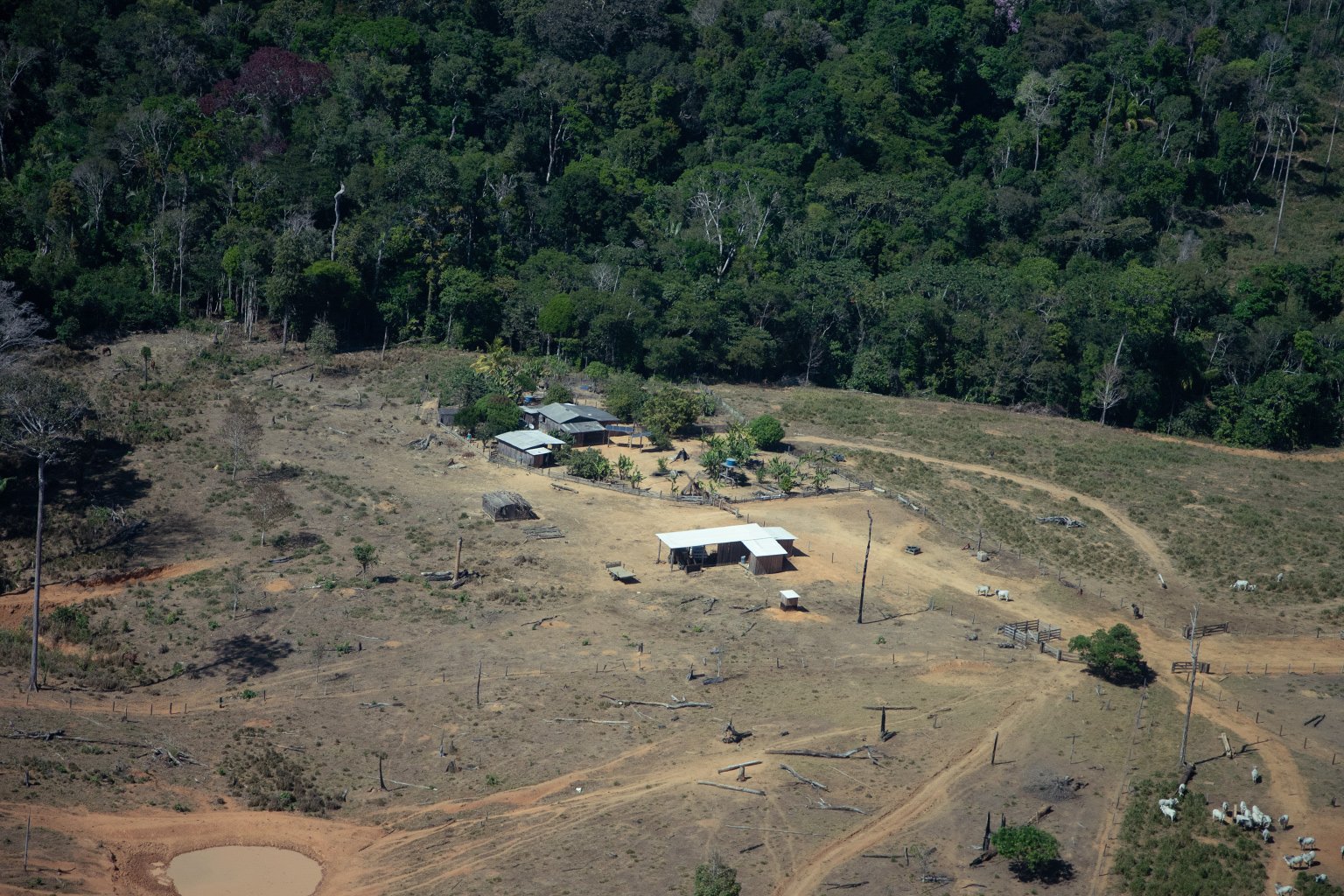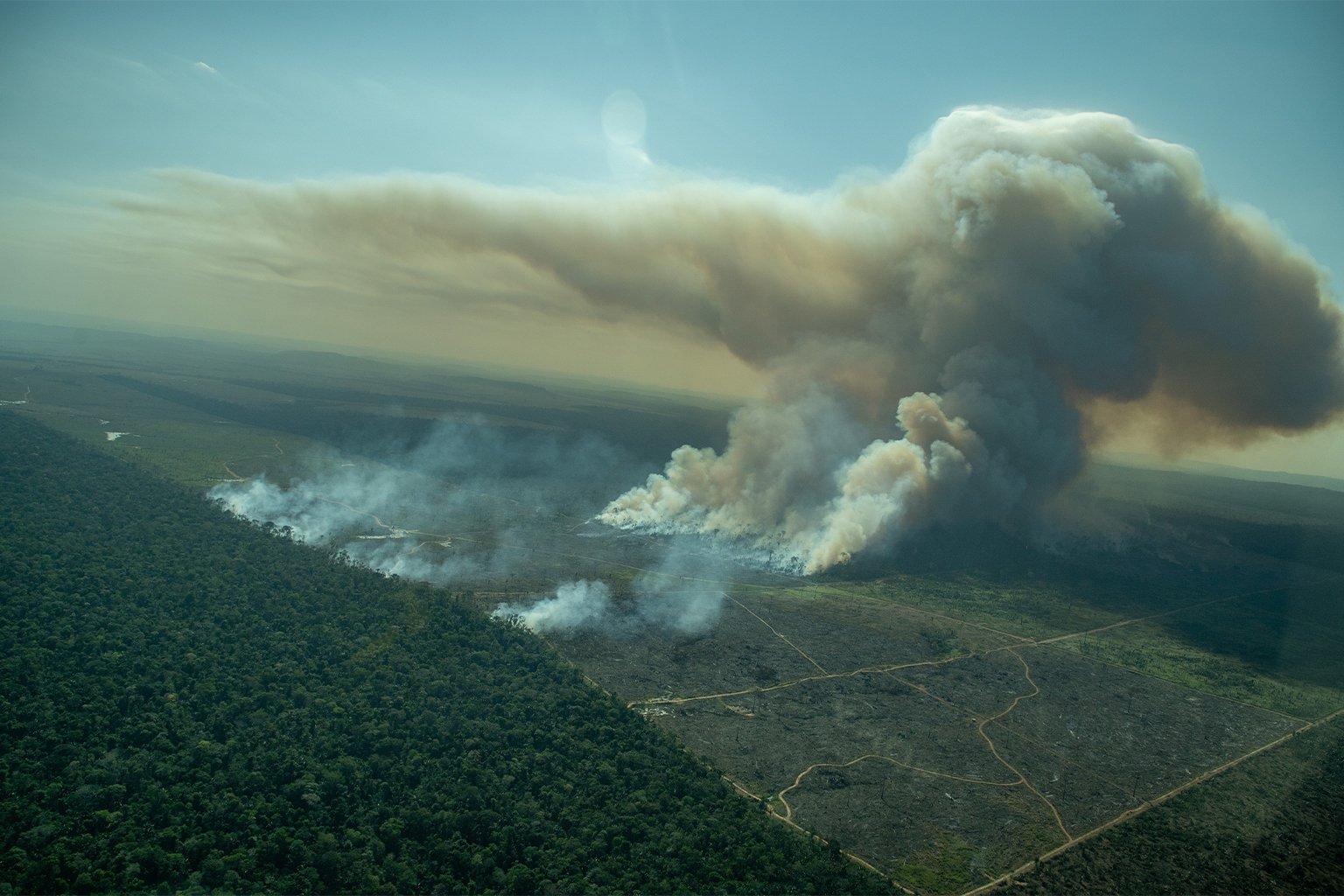- A new council set by the Brazilian government to vet deforestation and forest fire data from the country’s space agency has been widely slammed as a political ploy to aid President Jair Bolsonaro’s reelection bid.
- The National Institute of Space Research (INPE) has provided and analyzed deforestation and forest fire data in the Amazon since 1988 and is globally renowned for its monitoring expertise, but was left out of the new council.
- The Bolsonaro government has questioned the credibility of INPE’s data since taking office in 2019, drawing outrage from scientists and researchers for claiming that data showing a spike in deforestation under Bolsonaro was false.
- Experts have raise concerns that the new council could prevent the release of annual deforestation data, scheduled at the same time as this year’s elections, that are expected to show an alarming increase in both forest loss and fires.
This past June, scientists and researchers gathered outside the office of INPE, Brazil’s National Institute of Space Research, in the municipality of São José dos Campos. They were there to protest against the government’s decision to create a new thematic advisory board, headed by the Ministry of Environment, to classify deforestation and forest data from INPE — a task the institute can do, and already does, by itself. Critics say the new board, which doesn’t include any INPE members, could censor data considered damaging to President’s Jair Bolsonaro bid for reelection later this year.
“[The protest] was a response from our community of scientists, engineers, researchers, and technicians in light of another attempt of the Bolsonaro government to interfere in INPE’s activities,” said Acioli Olivo, vice president of SindCT, the union for science and technology workers in the federal government. “This government, throughout its three-and-a-half-year term, has led a series of attacks on INPE,” he told Mongabay by phone.
Since taking office at the start of 2019, the Bolsonaro administration has pursued an anti-environmental agenda, blocking budgets and regulations aimed at protecting Brazilian biomes and backing new legislation in Congress to expand mining, logging and farming on protected lands, including Indigenous reserves.
INPE has provided publicly available data about deforestation and forest fires in the Brazilian Amazon since 1988. It currently uses two satellite systems for this task. One of them, the Brazilian Amazon Satellite Monitoring Project, or PRODES, is INPE’s most precise satellite system, with an accuracy rate of around 95%, according to the space institute, and collects data that is released annually. The other one is the Real-Time Deforestation Detection System, or DETER, created in 2004 to provide real-time data for daily and monthly reports. DETER is used to assist in on-the-ground inspections by IBAMA, Brazil’s environmental protection agency, and has a lower resolution than PRODES. But whenever DETER data has indicated an increase in deforestation, PRODES has confirmed the trend and revealed a higher rate than the one calculated by DETER.
“Brazil has very technically precise information about everything that is happening to deforestation and forest fires,” said Suely Araújo, a former head of IBAMA and senior specialist in public policy at the Observatório do Clima (Climate Observatory), a network of Brazilian civil society organizations advocating climate action. “INPE is known worldwide for this type of [deforestation and forest fire] monitoring,” Araújo told Mongabay by phone.
The Ministry of Economy is among the government institutions given a seat on the new council that will vet INPE’s deforestation data. The ministry told Mongabay in an emailed statement that the council will use a new program from the Digital Government Secretariat designed to “improve the use” of government-generated deforestation and forest fire data. The software includes, according to the ministry, developing tools that enable “a more accurate calculation of illegal activities, as well as enabling the generation of more qualified information regarding deforestation occurrences.”
But Olivo, from the federal science workers’ union, said the systems INPE uses are already efficient at providing precise information about deforestation data. “INPE’s monitoring system is an example to the world,” he said. “[The new council] doesn’t have greater technical capacity than INPE to monitor [deforestation and forest fires].”

In addition to representatives from the ministries of environment and economy, the new council will also feature members from the ministries of agriculture, defense, and justice — a mix that critics say is unsuitable for analyzing deforestation data. “The Ministry of Defense has nothing to do with this,” said Ricardo Galvão, a former INPE director-general and now professor of physics at the University of São Paulo. “The same with the representative from the Ministry of Economy. No one there has specialization [in deforestation and forest fires]. From an operational point of view, there isn’t any necessity in creating this board,” Galvão told Mongabay by phone.
Experts have also criticized the exclusion of crucial environmental institutions, including the Ministry of Science and Technology, which oversees INPE. “This board doesn’t make any sense,” Araújo said. “[As well as INPE], there’s IBAMA with experienced technicians in these areas. The Chico Mendes Institute [for Biodiversity Conservation, or ICMBio] also has technicians in this field. If this council made any sense, and I don’t think it does, it would have to have the participation from these institutions.”
The Ministry of Environment did not respond to Mongabay’s request for comment. But it said in a statement that the new advisory council will use data from databases provided by other ministries as well as from INPE. Critics say INPE already provides technically accurate data that experienced professionals can evaluate.
They speculate that the underlying reasons for the council’s creation could be political. Brazil will hold the first round of this year’s elections on Oct. 2, with President Bolsonaro seeking a second term. “While we don’t have proof of this, it’s a huge concern that, in fact, the council may have been created to prevent the disclosure of INPE data,” Galvão said. “Because this year we have the elections in October, we are afraid that the council will halt data release before the elections. We are worried about a political objective underlying the creation of this council.”

Typically, the annual deforestation data provided by PRODES is released around October. If it’s released as scheduled this year, it would account for the deforestation that occurred between August 2021 and the end of July 2022. But INPE doesn’t have the authority to publish this annual data without sending it to the government first. The second round of the elections is set for Oct. 30, when Bolsonaro is likely to face former president Luiz Inácio Lula da Silva.
“If the data show a large increase in deforestation, then certainly this will prejudice the political campaign of President Bolsonaro,” Galvão said.
The president’s office didn’t reply to Mongabay’s request for comment.
The creation of the new council came soon after INPE released data about the highest number of fires in the Amazon for May in the last 18 years. This year, the Brazilian Amazon recorded 2,287 forest fires in May, 96% higher than the same month last year (1,166 fires), and the highest for the month since 2004, when INPE detected 3,131 forest fires.
The accumulative numbers from 2022 don’t look good for Bolsonaro, either. New numbers from INPE, released on July 8, show that deforestation in the Brazilian Amazon is off to the fastest start for the first half of any year since 2008. According to the official data, the Brazilian Amazon suffered a 17% increase in forest loss — 3,988 square kilometers (1,540 square miles) have been cleared since Jan. 1, an area five times the size of New York City, according to The Washington Post.

‘Unfounded criticism’ of INPE data
The Bolsonaro government has attacked INPE data since coming to office in 2019, in what opposition Green Party legislators have called “the repetition of denialism of data disclosed by INPE regarding the increase in deforestation and fires in the country.”
The controversy began after reports of an 88% increase in deforestation in June 2019 compared to the same month the previous year. Bolsonaro dismissed INPE’s figures at the time. “I am convinced that INPE’s data is lies,” he said in a press conference on Aug. 1, 2019. “In our feeling, [this data] is not consistent with reality.”
The government did not provide significant evidence to support its claims about the inaccuracy of INPE’s data. Bolsonaro also fired INPE’s director-general at the time, Ricardo Galvão, after he defended the institution and criticized the president.
The Brazilian Society for the Progress of Science released a letter signed by Ildeu de Castro Moreira, then president of the organization, condemning Bolsonaro’s comments while endorsing INPE’s data. “Unfounded criticism about a scientific institution that has been operating for around 60 years and has ample recognition in the country and abroad is offensive, unacceptable and harmful to scientific knowledge,” Moreira wrote.

Bolsonaro has come under fire for attacking the country’s environment agencies in an attempt to dismantle environmental policies to please illegal miners, land grabbers, loggers and ranchers — many of them connected to Bolsonaro’s allies in Congress. As well as other environmental agencies, INPE has faced severe budget constraints. According to SindCT, INPE’s budget was halved from 158.1 million reais ($29.2 million) in 2020 to 79.4 million reais ($14.6 million) in 2021. It increased slightly in 2022 to 92.3 million reais ($17 million).
“Even with a small budget, [INPE] does so much. They are people who produce so much information using little public resources,” Araújo said. “It’s absurd what the current government is doing to INPE. This delegitimization of INPE is totally unacceptable.”
SindCT’s Olivo said he doubts the effectiveness of the new council. He said INPE understands better how to monitor deforestation in the Amazon as well as other threatened biomes such as the Atlantic Forest and the Cerrado savanna. “This is just another attempt to take away INPE’s mission of monitoring deforestation and forest fires,” he said.
Banner image: Scientists and researchers from INPE gather outside the São José dos Campos office of INPE in protest at the government’s approach to deforestation in the Amazon Rainforest. The banner says “Deforestation of the Amazon. It’s the government who lies.” Image courtesy of SindCT.
FEEDBACK: Use this form to send a message to the author of this post. If you want to post a public comment, you can do that at the bottom of the page.












